THAI HEADDRESS IN TRADITIONAL DANCE | THAILAND 🇹🇭
โพสท์โดย✦ Model: Chonticha Ninthakan.
✦ Makeup & hairstylist: Heselnut Nuttida.
✦ Photo: Vorraporn Thanachotkosol.
✦ "รัดเกล้ายอด: Thai Tiara" The Rud Klao Yod used in Thai dance is enlarged but lightweight for the movement of the body, which is made of carved wood, brass plates, gems, glass plates, and gold leaf attached by changing from using hairpins to fastening with a black rope to make it easier to wear on the head.
✦ "รัดเกล้าเปลว: Thai Flame Tiara" or The Rat Klao Plew is the Female's head ornaments for the Traditional Dance Drama only. in the Khon and the Lakhon (Dance Drama) performance worn by the character of the ladies of the royal court, the Lady, and the Royal Governess.
✦ "มงกุฏนาง: Mongkut" Thai Costume Accessories. In the Thai classical dance traditions of khon and the various forms of lakhon.
✦ "ชฎาพระ: Chada" is worn by male characters of royal status, originated as headdresses symbolizing the matted hair of an ascetic formed into the shape of a crown, often found in the iconography of Shiva and Avalokiteśvara.
The "chada" and "mongkut" acquired the distinctive tall pointed shape from the "lomphok", a pointed cloth headdress of Persian origin. In Thai classical dance, the "chada" is worn by male characters of royal status, while the "mongkut" is worn by females.
✦ "เทริด - Serd" is the Southern Thai crown for "Nora -โนรา" Thai classical performance. Nora is a type of dance-drama originating in Southern Thailand and practiced mainly in the northern states of Malaysia and the southern provinces of Thailand.
✦ "กรอบพักตร์ กระบังหน้า หรือ พระอุณหิส: Krabung nah" (Forehead ornament or Thai Headdress, in Thai word means: the frame of face) is a decorative frame above the forehead, a flower pattern that curves to the ears.
"Forehead ornament" or Thai headdress has been a female headdress since the Dvaravati period. In later times, forehead ornaments were made to be worn with various types of headdresses such as the queen crown, The Diadem (Hair Bun Topknot Cover). In Thai classical performances, the forehead ornament can be worn by the male and the female roles, such as the role of Brahman, Younger prince, Younger princess, Court lady, and Commoner lady.



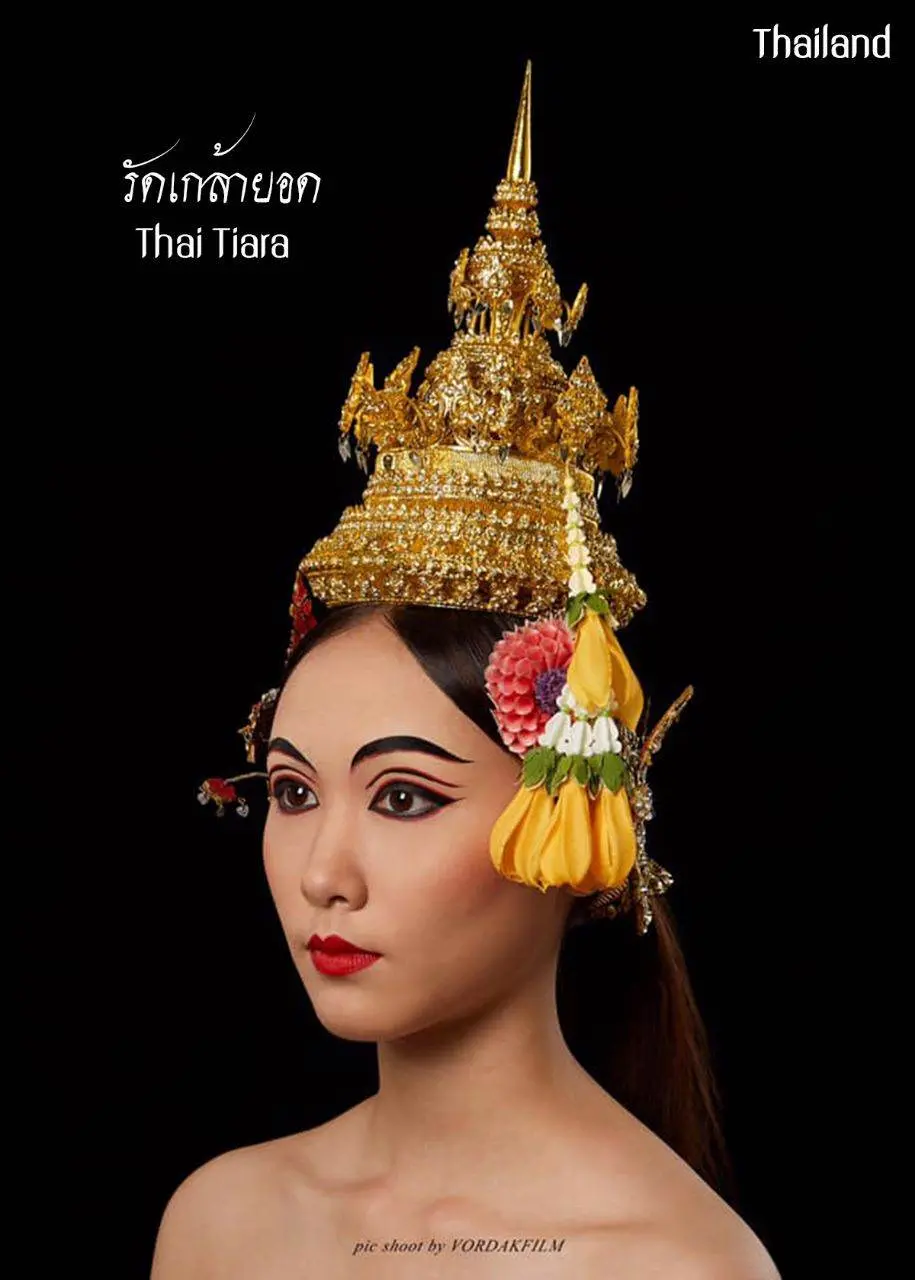
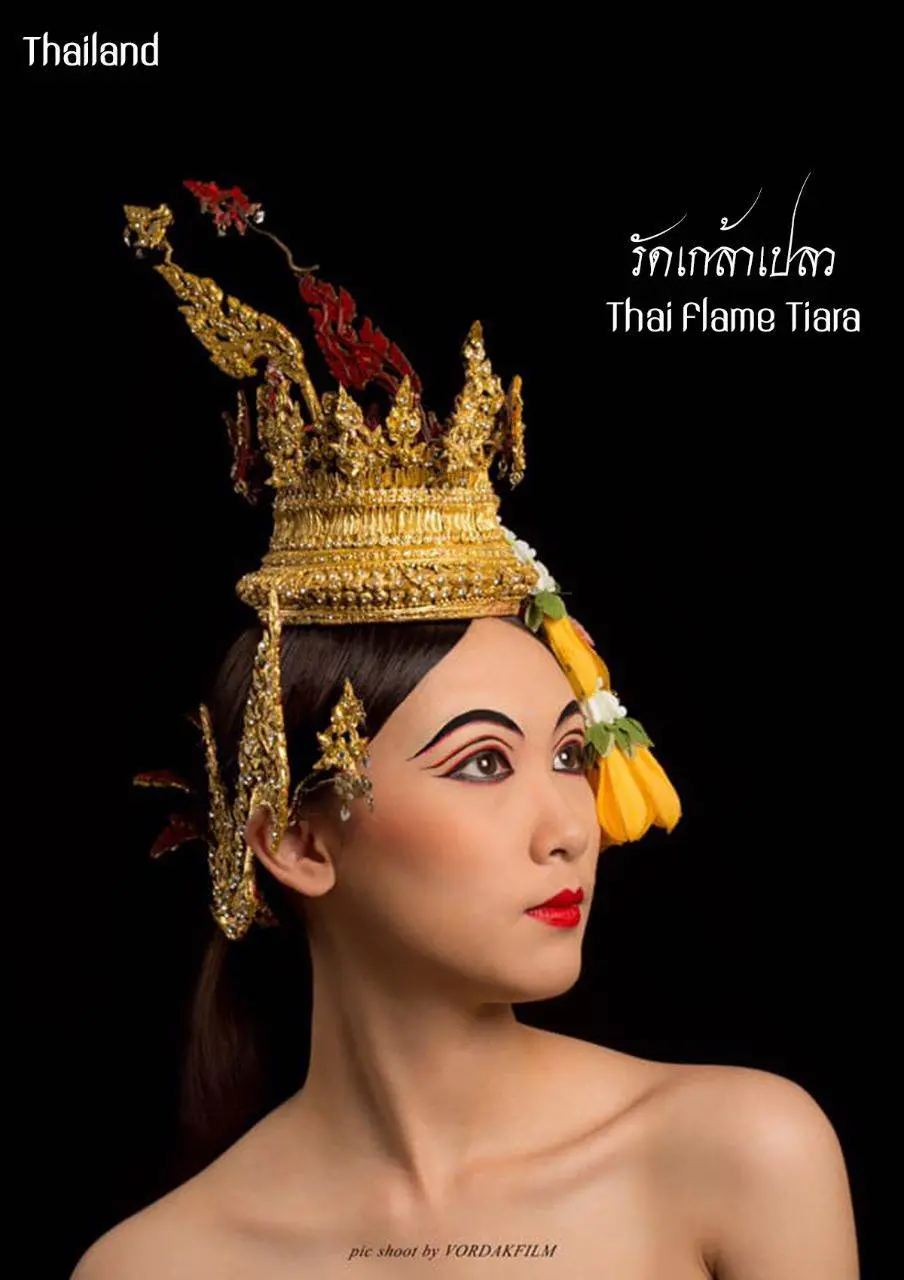
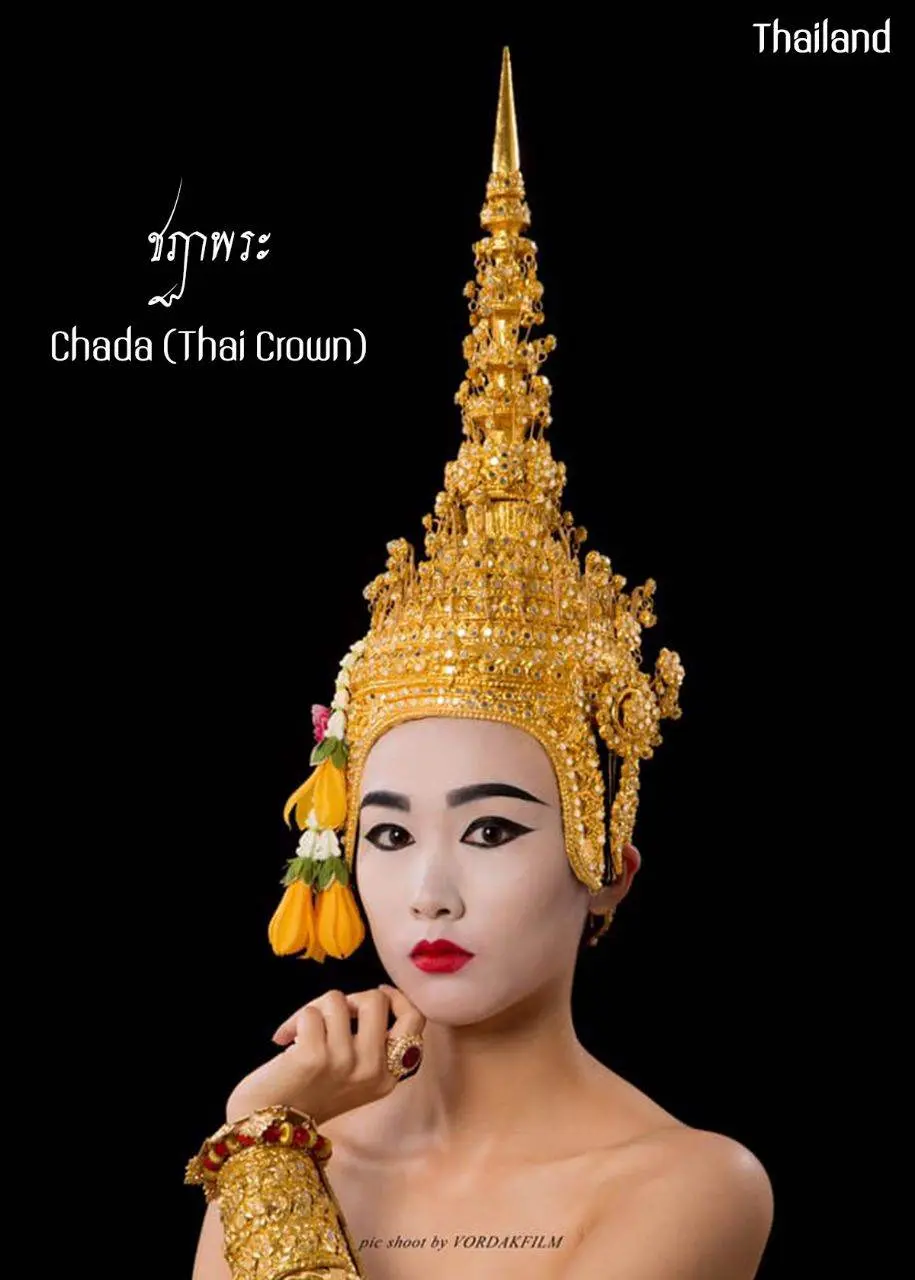
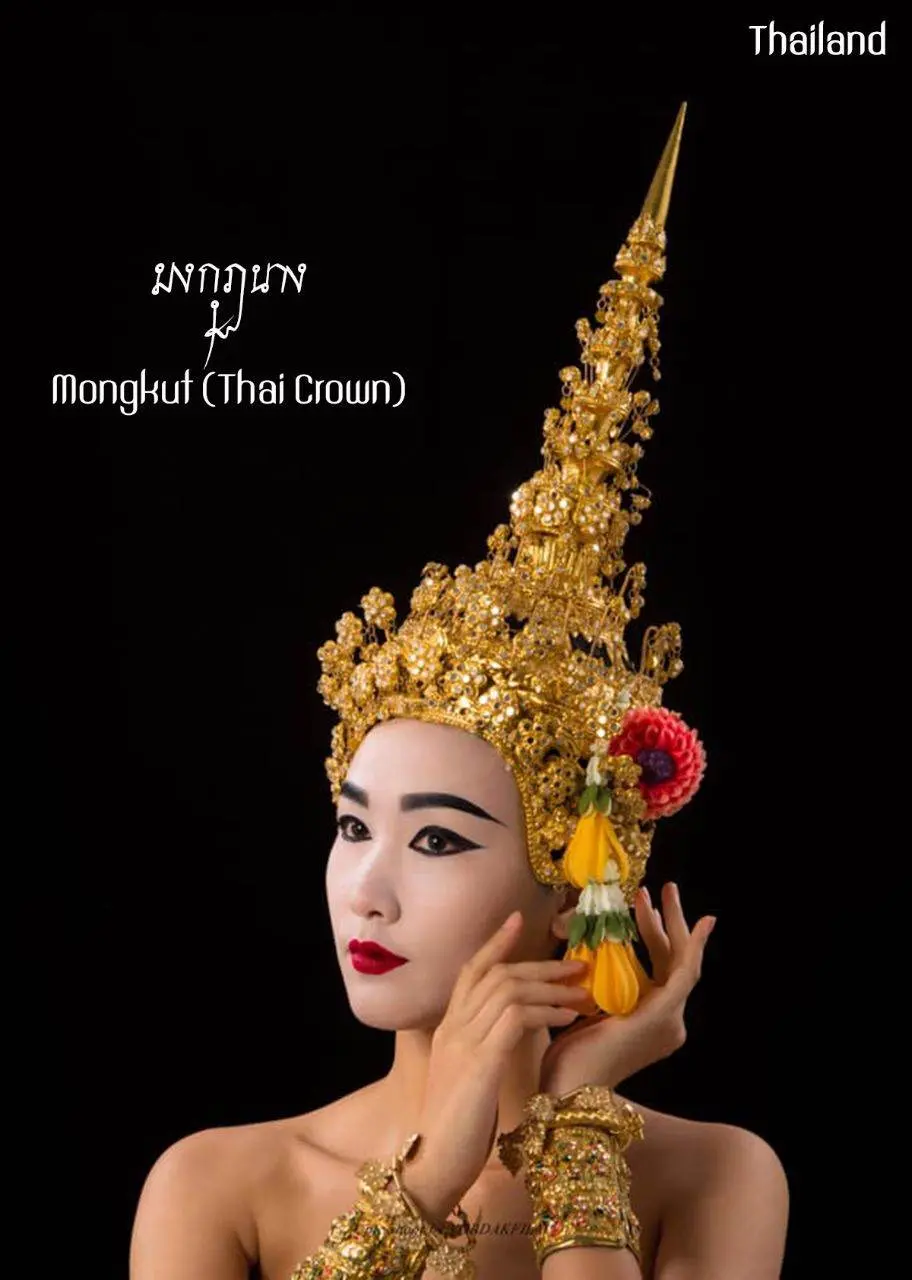
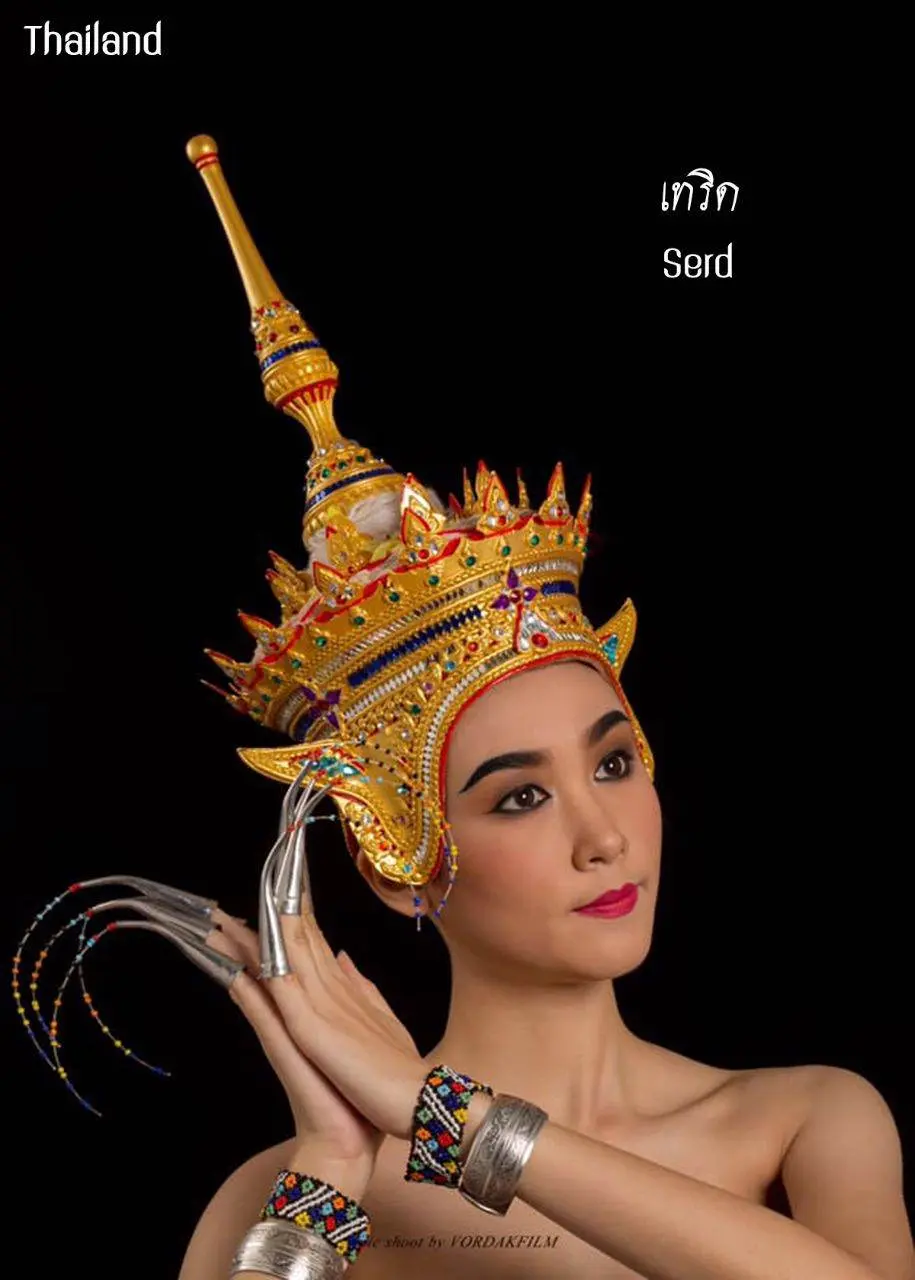
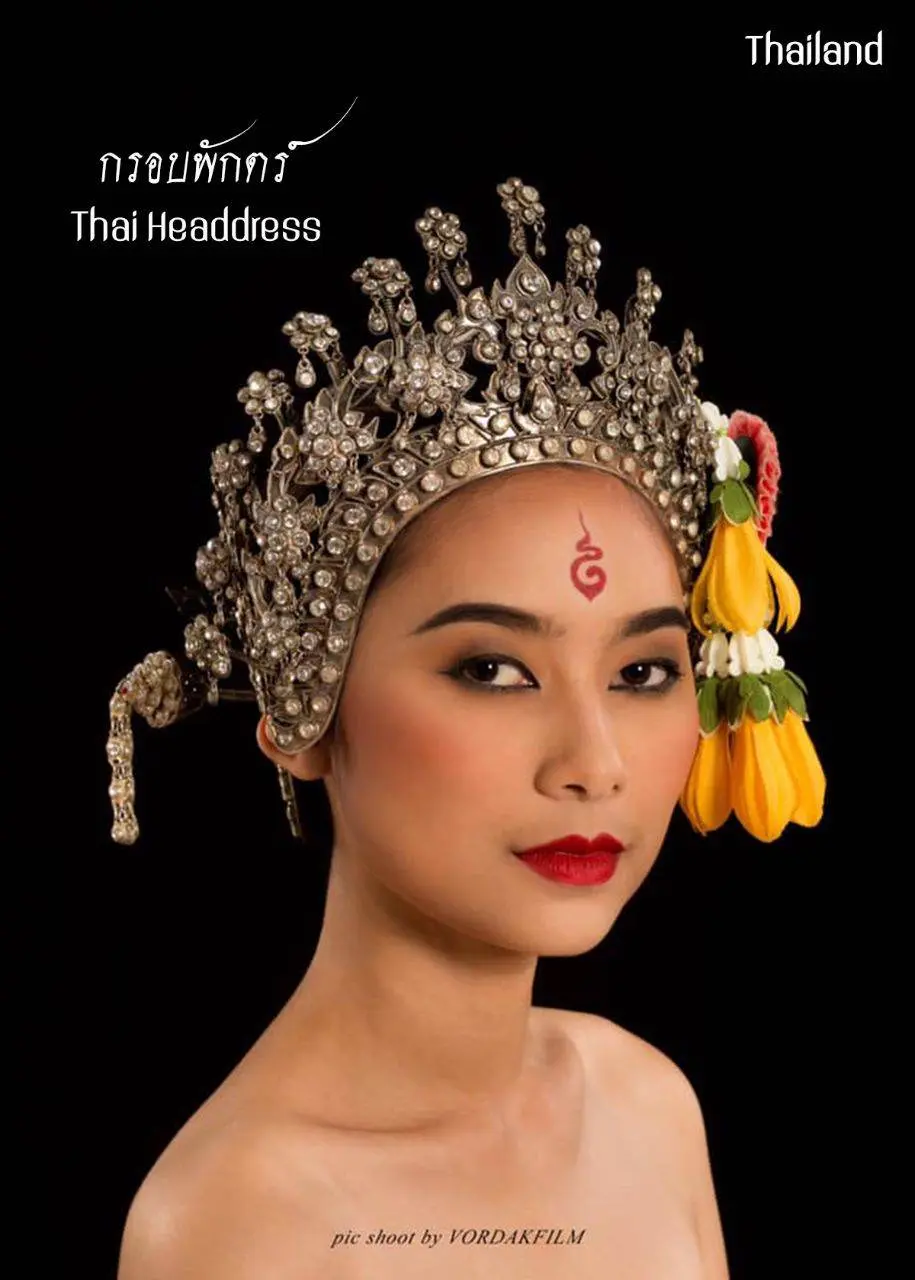
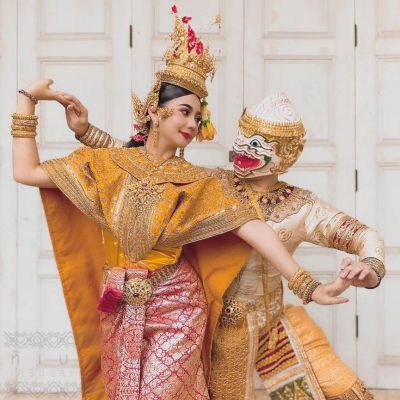 THAILAND 🇹🇭 | Khon masked dance drama in Thailand
THAILAND 🇹🇭 | Khon masked dance drama in Thailand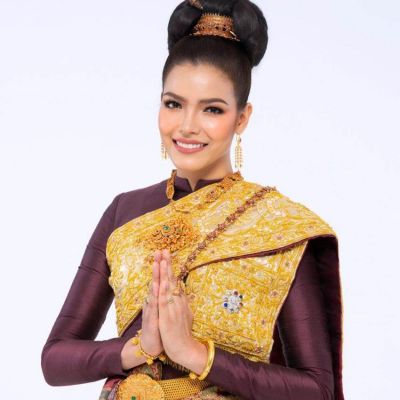 THAI DRESS, ชุดไทย: THAI NATIONAL COSTUME | THAILAND 🇹🇭
THAI DRESS, ชุดไทย: THAI NATIONAL COSTUME | THAILAND 🇹🇭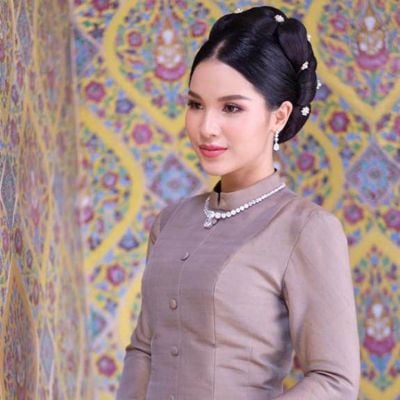 Thai Chitralada Dress: ชุดไทยจิตรลดา | THAILAND
Thai Chitralada Dress: ชุดไทยจิตรลดา | THAILAND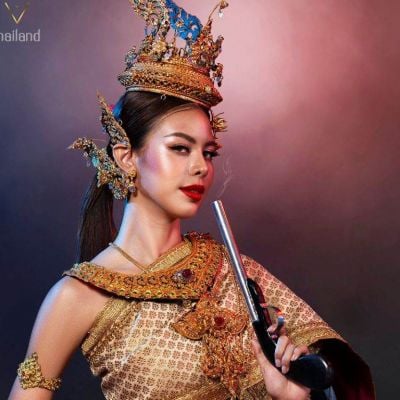 Nang Songkran 2022: Kirinee Devi or Kankinee Devi | THAILAND 🇹🇭
Nang Songkran 2022: Kirinee Devi or Kankinee Devi | THAILAND 🇹🇭